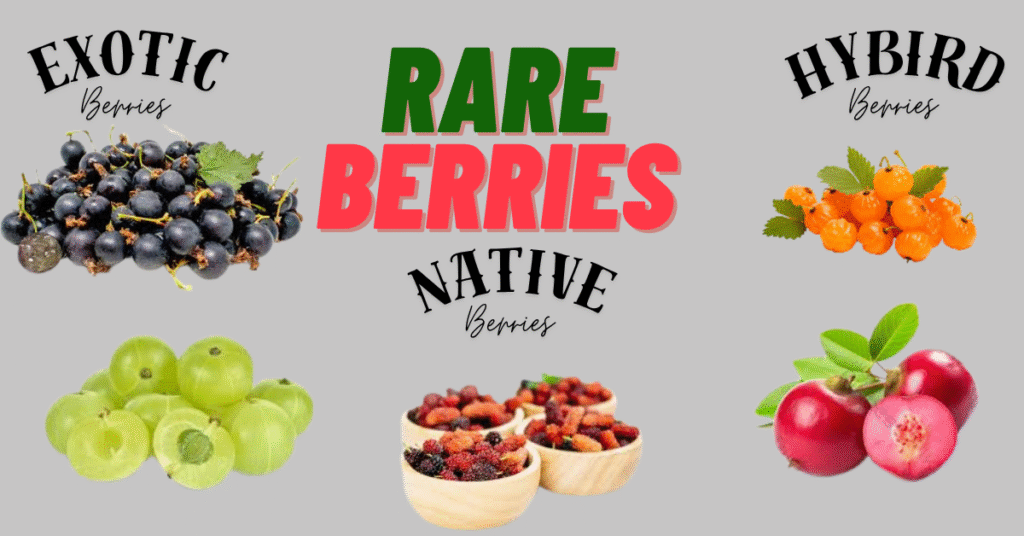This is historical truth that human alway looking for taste, your witness yourself that when you visiting grocery stores, in fruit sections you found some berries with eye catching look, by picking randomly tasting a berry a wow feel tiger you that its taste is not like other common berries, it’s completely different from the usual strawberries or blueberries.
Of course, unconsciously, you dive into the delicious world of rare berries, while experiencing their tangy mix of raspberry and grape-like flavors, or a Chilean guava that surprises you with a sweet strawberry-bubblegum burst.
These are just a couple of examples from the exciting world of rare berries! Fruits like jostaberries, haskap berries, and autumn olives bring unique, mouthwatering tastes that captivate food lovers, home gardeners, and anyone curious about new flavors. In this article, we’ll take you on a flavorful journey, sharing a list of rare berries, Exotic berries, types of berries, delightful flavors, and simple step-by-step tips to grow and savor these hidden gems right at home.
- Why Rare Berries Are Remarkable:
- A Berry-Picking Memory: My First Wineberry:
- List of 14 Rare Berries: Nature’s Hidden Gems:
- Knowing about Berry Types:
- Where to Find Berries:
- Step-by-Step Guide to Growing Rare Berries: A Beginner-Friendly Approach:
- Why Buy Rare Berries Today?
- FAQ: Everything You Need to Know About Rare Berries:
Why Rare Berries Are Remarkable:
You encounter common berries every day, such as strawberries or blueberries, but rare berries are special because they are harder to find. Rare berries have unique characteristics: they might grow wild in places like mountains or rainforests of different regions of the world, or be lovingly cultivated by gardeners who know their flavors are worth the effort.
These berries come in dazzling colours, such as red, purple, blue, and even golden, and offer tastes ranging from sweet to tart to winey.
Now, it’s up to you if you are making jams, pies, or cocktails; rare berries are always on top to bring something extraordinary to the table.
Growing rare berries is like planting a piece of magic in your backyard. These berries are easy to care for, packed with antioxidants, and perfect for anyone who loves food or gardening. Let’s dive into a story that shows why rare berries are so special.

A Berry-Picking Memory: My First Wineberry:
When I was eleven years old, my family and I visited a family friend’s farm in Virginia. While exploring the woods, I saw some bright red berries glowing like tiny rubies. “Those are wineberries,” my friend said, handing me one.
The taste was incredible; the berries were sweet and tangy, with a hint of grape juice. You can’t believe I spent hours picking and eating them, my hands stained red; it felt like I had found a secret treasure.
Years later, I planted wineberries in my garden, and every summer, they bring back that joy if a kid can feel like an explorer with one berry; imagine what rare berries can do for you!

List of 14 Rare Berries: Nature’s Hidden Gems:
Now you have the curiosity to know about these rare berries , then do not wait, let’s familiarize with some rare berries, and know that each berry has a unique flavor ,uses and story.
1. Wineberries: Nature’s Red Jewels:
- What Are They? Wineberries come from East Asia but thrive in North America and Europe. These crimson berries grow on canes with soft, red bristles that glow in the sun. Their flavor blends blackberry, raspberry, and grape.
- Flavor: Sweet, tangy, with a wine-like richness.
- Season: July–August.
- Uses: Enjoy fresh, make wineberry jam, or toss into salads for a vibrant twist.

2. Jostaberries: The Tart-Sweet Hybrid:
- What Are They? Jostaberries are a cross between gooseberries and black currants. These thornless, dark purple berries pack a bold flavor.
- Flavor: Tart when young, sweeter when ripe, with a deep black currant note.
- Season: June–July.
- Uses: Perfect for jostaberry jam, pies, or chutney with roasted meats.
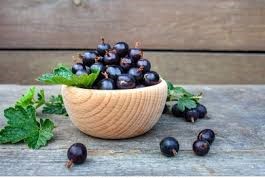
3. Haskap Berries: The Blue Honeysuckle:
- What Are They? Haskap berries, or honeyberries, are elongated, blue-purple berries from cold regions like Siberia and North America. They resemble stretched blueberries but have a unique taste.
- Flavor: Sweet-tart with a floral, grape-like kick.
- Season: May–June.
- Uses: Ideal for haskap jam, smoothies, or muffins.
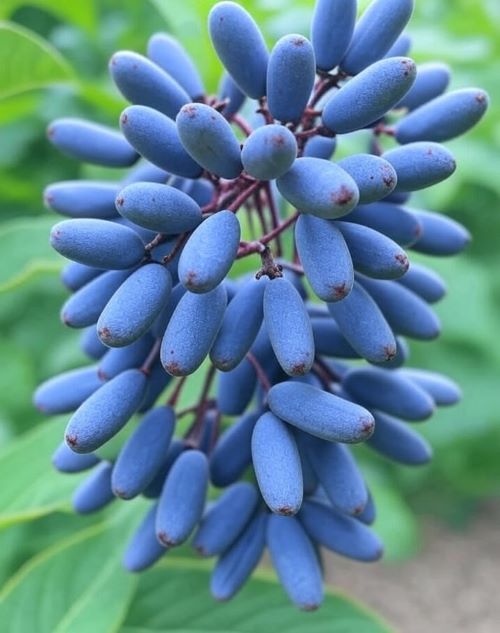
4. Chilean Guava: The Winter Sweetheart:
- What Are They? Chilean guava, also called tazziberries, are pink-red berries from South America. They grow on evergreen shrubs and taste like strawberries, kiwi, and bubblegum.
- Flavor: Sweet, slightly tart, with a tropical, candy-like twist.
- Season: Late autumn to winter.
- Uses: Eat fresh, infuse in vodka for liqueurs, or bake into upside-down cakes.
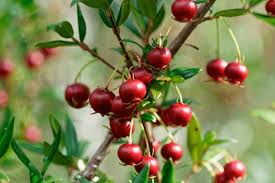
5. Autumn Olive: The Sweet-Sharp Hedge Berry:
- What Are They? Autumn olive berries are red-pink with silver speckles, growing on nitrogen-fixing shrubs. They’re great for edible hedges.
- Flavor: Tart when young, sweet when ripe, with a tangy zing.
- Season: Mid-summer to autumn.
- Uses: Make autumn olive jam or jelly.
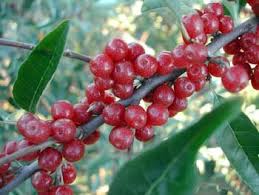
6. Cloudberries: Arctic Gold:
- What Are They? Found in Arctic regions like Scandinavia and Canada, these amber-colored berries grow in boggy, cold climates. They’re small, delicate, and prized for their rarity.
- Flavor: Tart, juicy, with a subtle honey-like sweetness.
- Season: July–August.
- Uses: Perfect for jams, desserts, or liqueurs like Finland’s cloudberry wine.
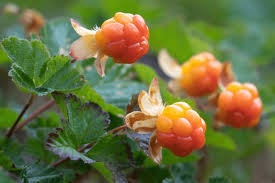
7. Miracle Berries: Taste Transformers:
- What Are They? Native to West Africa, these small red berries grow on shrubs and are known for making sour foods taste sweet by altering taste buds.
- Flavor: Mildly sweet, but their magic lies in their taste-altering effect.
- Season: Year-round in tropical climates.
- Uses: Eat fresh to experience flavor changes or use in experimental cuisine.
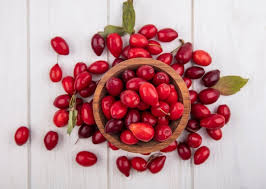
8. Salmonberries: Coastal Treasures:
- What Are They? Growing in the Pacific Northwest, these orange-to-red berries thrive in moist forests and resemble raspberries.
- Flavor: Mildly sweet, slightly tart, with a soft texture.
- Season: June–August.
- Uses: Eat fresh, blend into smoothies, or bake into pies.
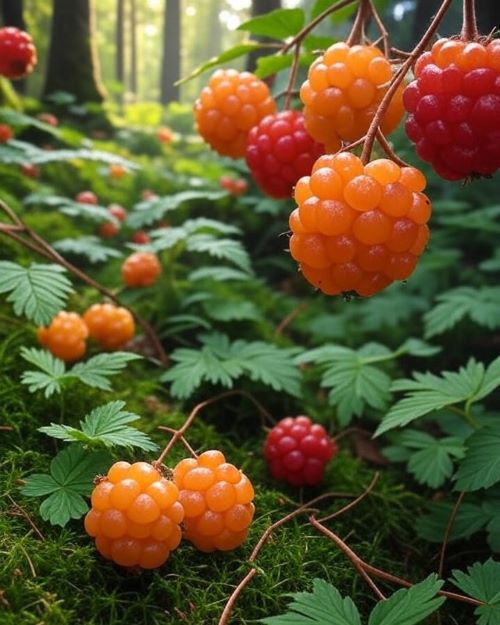
9. Loganberries: Hybrid Delights:
- What Are They? A delightful hybrid combination of blackberry-raspberry,these berries are native to North America, these dark red berries grow on thorny canes.
- Flavor: Tart, juicy, with a bold berry taste.
- Season: July–August.
- Uses: Ideal for jams, jellies, or cobblers.
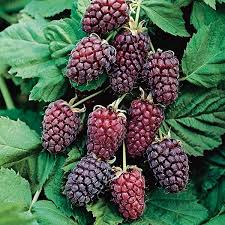
10. Tayberries: Scottish Stars:
- What Are They? A blackberry-raspberry cross from Scotland, these purple-red berries are larger than raspberries and less common.
- Flavor: Sweet-tart, with a rich, complex berry flavor.
- Season: July–August.
- Uses: Great for preserves, tarts, or fresh with cream.

11. Aronia Berries: Antioxidant Powerhouses:
- What Are They? Native to North America, also called chokeberries, these dark purple berries grow on shrubs.
- Flavor: Astringent, slightly bitter, packed with antioxidants.
- Season: August–September.
- Uses: Blend into smoothies, make juices, or dry for snacks.
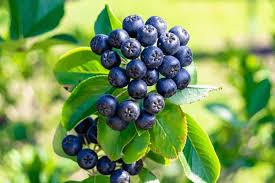
12. Gooseberries: Tart Gems:
- What Are They? Found in Europe and North America, these green, red, or yellow translucent berries grow on spiky bushes.
- Flavor: Tart, crisp, with a refreshing zing.
- Season: June–August.
- Uses: Bake into pies, make chutneys, or enjoy fresh.
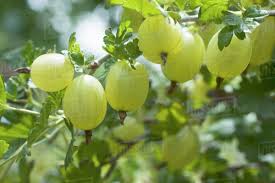
13. White Currants: Albino Delicacies:
- What Are They? A rare variety of red currant from Europe, these translucent white berries grow in small clusters.
- Flavor: Sweet, mild, less tart than red currants.
- Season: July–August.
- Uses: Add to desserts, make jellies, or garnish cocktails.
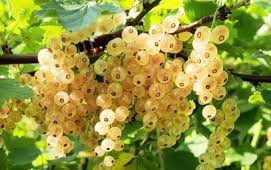
14. Schisandra Berries: Five-Flavor Wonders:
- What Are They? Native to East Asia, these bright red berries grow on vines and are used in traditional medicine.
- Flavor: A unique mix of sweet, sour, salty, bitter.
- Season: August–September.
- Uses: Dry for teas, make syrups, or use in herbal remedies.
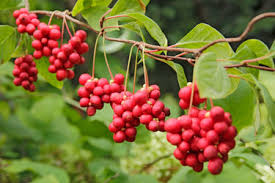
Checkout Rare berries nutrition facts and health benefits table for better understanding.
| Berry Type | Nutritional Facts (per 100g) | Health Benefits |
| Wineberries | 50 kcal, 8g carbs, 1.5g fiber, 0.5g protein, 10mg vitamin C (17% RDI), antioxidants (anthocyanins, flavonoids). | High in antioxidants, may reduce inflammation and oxidative stress. Vitamin C supports immunity and skin health. Fiber aids digestion. |
| Jostaberries | 40 kcal, 10g carbs, 2g fiber, 0.7g protein, 30mg vitamin C (50% RDI), high in anthocyanins. | Antioxidant-rich, supports heart health and immunity. May reduce risk of chronic diseases due to polyphenols. |
| Haskap Berries | 45 kcal, 9g carbs, 2g fiber, 0.6g protein, 20mg vitamin C (33% RDI), high in cyanidin-3-O-glucoside (C3G). | Anticancer potential (C3G may inhibit cancer cell growth), supports heart health, and boosts immunity. |
| Chilean Guava | 60 kcal, 14g carbs, 3g fiber, 1g protein, 40mg vitamin C (67% RDI), flavonoids. | High vitamin C boosts immunity and vision. Antioxidants may protect against heart disease and aging. |
| Autumn Olive Berries | 70 kcal, 15g carbs, 3g fiber, 1g protein, 20mg vitamin C (33% RDI), lycopene, polyphenols. | Lycopene and antioxidants may reduce cancer risk and improve heart health. Fiber supports digestive health. |
| Cloudberries | 50 kcal, 9g carbs, 2.5g fiber, 1g protein, 158mg vitamin C (263% RDI), ellagic acid. | Exceptionally high vitamin C boosts immunity and fights free radicals. May protect against cardiovascular diseases. |
| Miracle Berries | ~20 kcal, 4g carbs, 1g fiber, 0.2g protein, minimal vitamins, contains miraculin. | Miraculin alters taste perception, potentially aiding low-sugar diets for diabetes management. Limited nutritional benefits. |
| Salmonberries | 47 kcal, 10g carbs, 2g fiber, 0.9g protein, 9mg vitamin C (15% RDI), manganese, vitamins A & K. | Rich in polyphenols, supports heart health and reduces inflammation. Manganese aids metabolism. |
| Loganberries | 55 kcal, 13g carbs, 5g fiber, 1.5g protein, 15mg vitamin C (25% RDI), anthocyanins. | High fiber promotes digestive health and blood sugar control. Antioxidants may reduce heart disease risk. |
| Tayberries | 50 kcal, 12g carbs, 5g fiber, 1.2g protein, ~15mg vitamin C (25% RDI), anthocyanins (similar to loganberries). | High fiber supports digestion and glycemic control. Antioxidants may protect against chronic diseases. |
| Aronia Berries | 47 kcal, 10g carbs, 5g fiber, 1g protein, 14mg vitamin C (23% RDI), 194.61 GEC µg/mL phenolics. | Extremely high in antioxidants, may prevent cancer, heart disease, and obesity. Supports immune health. |
| Gooseberries | 44 kcal, 10g carbs, 4.3g fiber, 0.9g protein, 27.7mg vitamin C (46% RDI), ORAC 3277 μmol TE. | High vitamin C and antioxidants support immunity and protect against lung/oral cancers. Fiber aids digestion. |
| White Currants | 56 kcal, 13g carbs, 4g fiber, 1.4g protein, 41mg vitamin C (68% RDI), lower anthocyanins than red currants. | Vitamin C boosts immunity and skin health. Fiber supports digestion. Less astringent, aids gut health. |
| Schisandra Berries | 60 kcal, 12g carbs, 3g fiber, 1g protein, 10mg vitamin C (17% RDI), lignans, polyphenols. | Protects against gastric ulcers, reduces oxidative stress, and supports liver health. May improve endurance and mental clarity. |

Knowing about Berry Types:
As we discovered, rare berries are nature’s sweet gifts, offering a wide range of flavors, colors, and numerous nutritional and health benefits. The rare berries came in three types: wild native varieties, innovative hybrids, and exotic berries, each type offering something unique to your garden and dining table.
Why Categorize Berries?
Categorizing berries into native, hybrid, and exotic helps gardeners, food enthusiasts, and researchers understand their origins, growing requirements, and unique characteristics. This classification is crucial for several reasons:
- Native Berries:
- Hybrid Berries:
- Exotic Berries:
Categorizing rare berries helps users select berries that suit their climate, taste preferences, or gardening goals, ensuring they can enjoy the best berries for their needs. It also aids in understanding the ecological and cultural significance of each type, enhancing appreciation for nature’s bounty.
The Native Berries are Naturally Adapted Wonders:
Native berries are those that have evolved naturally in a specific region of the world and often play a significant role in local ecosystems and cultures. native berries are well-suited to their environments, requiring minimal intervention, which makes them excellent choices for low-maintenance gardening or commercial cultivation.
Below, we explore examples of native berries, with a particular focus on North America, given its rich diversity and relevance in gardening discussions.
Examples of Native Berries
The following table lists examples of native berries, their origins, descriptions, and where to find them:
| Berry Name | Origin | Description | Where to Find |
| Blueberries (Vaccinium corymbosum) | Eastern North America | Small, round, blue or purple berries with a sweet flavor, rich in antioxidants. Versatile for eating fresh, baking, or making jams. | Local farmers’ markets, wild patches (where legal), or home gardens in suitable climates. |
| Cranberries (Vaccinium macrocarpon) | Northern North America | Tart, red berries that grow in bogs, used in sauces, juices, or dried. High in vitamins with medicinal properties. | Specialty stores, dried or frozen in supermarkets, or cultivated in bog regions. |
| Huckleberries (Vaccinium ovatum) | Western North America | Similar to blueberries but with a more intense, tart flavor. Used in pies, jams, and syrups. | Wild foraging (where permitted) or specialty markets. |
These berries are deeply rooted in the histories of their native regions. For instance, Native Americans used cranberries in traditional dishes and medicines, while blueberries were a staple for early settlers. Their natural adaptation to local conditions makes them excellent for sustainable gardening, supporting local wildlife, and reducing the need for chemical inputs.

Hybrid Berries: Innovations in Breeding:
Hybrid berries are the result of crossbreeding different berry species to create new varieties with enhanced traits. This process, often undertaken by plant breeders, aims to combine the best qualities of parent plants, such as improved flavor, larger fruit, disease resistance, or higher yield. These berries are popular for their productivity and unique taste profiles, making them favorites among gardeners and commercial growers.
Examples of Hybrid Berries:
The following table details examples of hybrid berries, their origins, descriptions, and where to find them:
| Berry | Origin | Description | Where to Find |
| Tayberry | Scotland (blackberry x raspberry) | Large, elongated berries with a sweet-tart flavor, perfect for fresh eating, jams, or desserts. | Specialty nurseries, online retailers for plants; fresh or frozen in select markets. |
| Loganberry | California, USA (blackberry x raspberry) | Sweet and tangy berries used in juices, wines, and pies, offering a unique flavor profile. | Farmers’ markets, specialty stores, or online for plants. |
| Boysenberry | California, USA (loganberry x raspberry x blackberry) | Large, juicy berries with a rich, sweet-tart taste, popular in jams, syrups, and ice cream toppings. | Grocery stores (fresh or frozen), farmers’ markets, or online for plants. |
Hybrid berries like the tayberry, developed in the 1970s in Scotland, and the boysenberry, created in California, showcase how plant breeding can enhance berry qualities. These varieties are often more productive and easier to grow than their wild counterparts, making them suitable for both home gardens and commercial production.
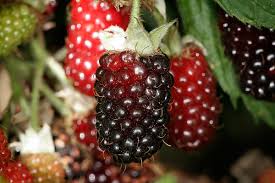
Exotic Berries: Global Flavors and Challenges:
Exotic berries come from regions far from where they are typically grown or consumed, often requiring special care to cultivate outside their native habitats. They bring unique flavors and nutritional benefits, adding diversity to both gardens and diets. These berries are often prized for their rarity and health properties, but their cultivation can be challenging due to climate and soil requirements.
Examples of Exotic Berries:
The following table lists examples of exotic berries, their origins, descriptions, and where to find them:
| Berry | Origin | Description | Where to Find |
| Acai Berries (Euterpe oleracea) | Amazon rainforest, South America | Small, dark purple berries with a rich, berry flavor, often used in smoothies and bowls due to high antioxidant content. | Health food stores, specialty markets, or online (often frozen or as juice). |
| Goji Berries (Lycium barbarum) | China and Tibet | Bright red berries with a slightly sweet and tangy taste, commonly dried for teas, soups, or snacks, packed with vitamins. | Health food stores, online retailers (dried), or specialty markets (fresh). |
| Lingonberries (Vaccinium vitis-idaea) | Scandinavia and northern regions | Small, red, tart berries used in jams, sauces, and as a meat accompaniment, rich in vitamins and used in traditional medicine. | Scandinavian specialty stores, online (fresh or frozen), or in jams/sauces. |
Exotic berries, such as acai, often featured in health-focused diets, and lingonberries, a staple in Scandinavian cuisine, offer a taste of global cultures. While they may be challenging to grow in some climates, their unique flavors make them worth the effort for adventurous gardeners and cooks.
For more details, see the benefits of acai or the nutrition of goji berries.
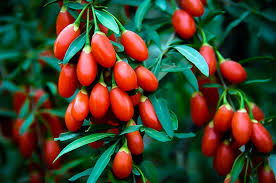
Where to Find Berries:
Understanding where to find berries is essential for both gardeners and consumers. Here’s a breakdown by category:
- Native Berries: Often available at local farmers’ markets, wild patches (where legal and safe), or through home gardening if the climate is suitable. They can also be found in natural reserves or picked wild, supporting local ecosystems.
- Hybrid Berries: Available at specialty nurseries, online retailers (for plants or seeds), or in grocery stores (fresh or frozen). These are often marketed for their improved traits, making them accessible for home cultivation or purchase.
- Exotic Berries: Found in health food stores, specialty markets, or online, especially in dried, frozen, or juice forms. Some may be available as plants for home cultivation, but they may require specific care and greenhouse conditions.
This information ensures users can access the berries they desire, whether for gardening, cooking, or health benefits.
Step-by-Step Guide to Growing Rare Berries: A Beginner-Friendly Approach:
Growing rare berries like haskap, Chilean guava, jostaberries, or wineberries is a rewarding way to add unique flavors and vibrant colors to your garden. These berries are packed with antioxidants, vitamins, and distinctive tastes that elevate your culinary creations. Whether you’re a novice gardener or a seasoned grower, this easy-to-follow guide will help you cultivate rare berries like a pro. Follow these steps, tailored to various climates and berry types, and discover how to nurture your own berry patch with tips from trusted sources like Raintree Nursery and One Green World.
1. Choose Your Berry Based on Your Climate:
Selecting the right berry for your climate ensures healthy plants and bountiful harvests. Rare berries have specific temperature and growing zone preferences, so check your USDA Hardiness Zone before choosing.
- Haskap Berries: Also known as honeyberries (Lonicera caerulea), these sweet-tart, blueberry-like berries thrive in cold climates (Zones 2–7). Ideal for northern regions, they tolerate temperatures as low as -40°C. Try cultivars like ‘Borealis’ or ‘Tundra’ for reliable yields.
- Chilean Guava: These tangy, strawberry-flavored berries scientific name (Ugni molinae) prefer milder climates (Zones 8–10) and can handle light frosts down to -10°C. Perfect for coastal or temperate gardens.
- Jostaberries: A gooseberry-black currant hybrid scientific name (Ribes x nidigrolaria), jostaberries are hardy in Zones 3–8, adaptable to various climates, and produce tart, juicy berries.
- Wineberries: These vibrant red berries (Rubus phoenicolasius) are suited for Zones 4–8, offering a sweet-tart flavor and thriving in temperate regions.

Tip: Research your local climate and soil conditions. Source high-quality plants from nurseries like Berries Unlimited or Stark Bro’s to ensure healthy stock.
2. Find the Perfect Spot:
Most rare berries need the right balance of sunlight and well-drained soil to flourish. Choosing an optimal location sets the foundation for healthy growth.
- Sunlight: Haskap and wineberries prefer full sun (6–8 hours daily) for maximum fruit production, while Chilean guava and jostaberries tolerate partial shade (4–6 hours). Observe your garden to find a spot with consistent light.
- Soil Drainage: Berries dislike waterlogged roots. Test drainage by digging a 12-inch hole, filling it with water, and ensuring it drains within a few hours. If drainage is poor, consider raised beds.
- Space: Ensure enough room for growth. For example, wineberries spread via canes, while Chilean guava shrubs stay compact, making them great for containers or small gardens.
Tip: Use a soil moisture meter, available at Amazon, to monitor conditions and avoid overwatering.

3. Prepare the Soil for Optimal Growth:
Healthy soil is key to vibrant berry plants. Most rare berries prefer slightly acidic, nutrient-rich soil, but some are more forgiving.
- Test Soil pH: Aim for a pH of 5.5–6.5 for jostaberries and haskap, while Chilean guava tolerates 5.0–7.0. Autumn olive (Elaeagnus umbellata), another rare berry, thrives in poor soils with a pH of 4.8–7.5. Use a soil test kit from Home Depot to check pH.
- Enrich with Compost: Add organic compost or well-rotted manure to boost nutrients and improve soil structure. Mix 2–3 inches into the top 12 inches of soil.
- Amend for Specific Berries: For jostaberries, incorporate sulfur to lower pH if needed. For autumn olive, minimal amendments are necessary due to its nitrogen-fixing ability.
Tip: Source organic compost from local garden centers or Gardener’s Supply Company for consistent quality.
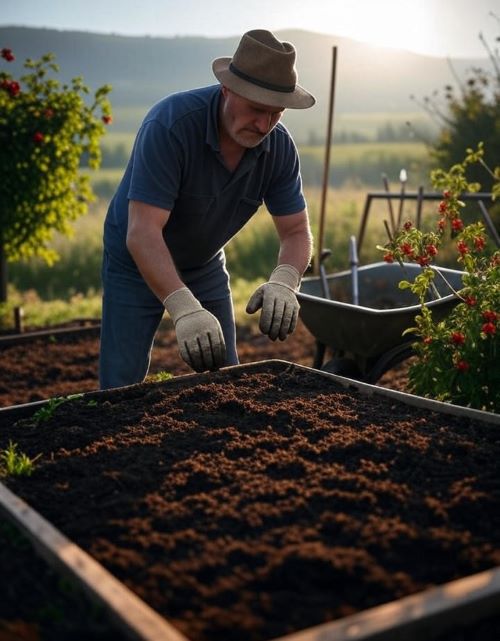
4. Plant with Care:
Proper planting ensures your berry plants establish strong roots for long-term success.
- Timing: Plant in early spring or fall when temperatures are cool, allowing roots to settle before extreme heat or cold. For colder climates, spring is best for haskap; fall suits Chilean guava in milder zones.
- Digging the Hole: Dig a hole twice as wide and as deep as the root ball. For example, a jostaberry plant needs a 12–18-inch wide hole.
- Planting: Place the plant so the crown (where roots meet stem) is level with the soil surface. Fill with soil, gently firming it, and water thoroughly to eliminate air pockets.
- Spacing: Space haskap and jostaberry plants 4–6 feet apart, wineberries 6–8 feet, and Chilean guava 2–3 feet for container or hedge planting.
5. Water and Mulch for Healthy Growth:
Consistent moisture and weed control are essential for young berry plants.
- Watering: Keep soil consistently moist but not soggy, especially during the first year. Water deeply once or twice weekly, providing 1–2 inches of water. Haskap and Chilean guava need slightly less once established.
- Mulching: Apply a 2–3-inch layer of organic mulch like wood chips, straw, or bark around the base to retain moisture, suppress weeds, and regulate soil temperature. Keep mulch 2 inches from the stem to prevent rot.
- Tools: Use a soaker hose or drip irrigation system from DripWorks for efficient watering.
Tip: Check soil moisture with your finger 2 inches deep; water if it feels dry.
6. Prune Smartly for Productivity:
Pruning encourages healthy growth and maximizes fruit production.
- Wineberries: Prune in late winter or early spring to remove dead or weak canes and promote new growth. Cut back old canes that have fruited to ground level, leaving 5–7 strong new canes per plant.
- Tayberries: Similar to wineberries, prune in early spring to remove old fruiting canes and thin out crowded areas to improve airflow and sunlight penetration.
- Jostaberries: Prune lightly in late winter to shape the bush and remove crossing or damaged branches, maintaining an open structure.
- Haskap: Minimal pruning is needed; remove dead or broken branches in early spring to keep the plant healthy.
- Chilean Guava: Trim lightly after fruiting to maintain a compact shape, especially for container plants, and remove any dead wood.
Tip: Use clean, sharp pruning shears from Felco for precise cuts and to prevent plant damage.
7. Protect from Birds and Pests:
Rare berries are a magnet for birds and pests, so take steps to safeguard your harvest.
- Bird Netting: Cover Chilean guava, wineberries, and tayberries with lightweight netting during fruiting season to deter birds. Find durable netting at Gardener’s Supply Company.
- Pest Control: Watch for aphids or spider mites, especially on jostaberries. Use neem oil or insecticidal soap from Amazon for organic control.
- Fencing: For autumn olive, which attracts deer, install a small fence or use deer-repellent sprays if needed.
Tip: Check plants weekly for pest signs and act early to prevent infestations.
8. Harvest at the Right Time:
Timing your harvest ensures the best flavor and quality from your rare berries.
- Haskap Berries: Pick when dark blue and slightly soft, typically June to July, for a sweet-tart taste.
- Chilean Guava: Harvest in late autumn to winter when berries are bright red and aromatic.
- Jostaberries: Collect in mid-summer when dark purple and juicy, with a slight give when squeezed.
- Wineberries: Pick in July when deep red and easily detach from the stem for optimal sweetness.
- Tayberries: Harvest in July when reddish-purple and plump, avoiding overripe, mushy berries.
Tip: Taste-test a few berries to confirm ripeness, as color alone isn’t always enough.
Start Growing Your Rare Berries Today!
With these simple steps, you can grow rare berries that add unique flavors and beauty to your garden. From the cold-hardy haskap to the ornamental Chilean guava, each berry offers a special reward for your efforts. Visit Raintree Nursery, Berries Unlimited, or One Green World to purchase rare berry plants and begin your gardening adventure. Enjoy fresh, homegrown berries and impress your friends and family with these delicious, uncommon fruits!
Why Buy Rare Berries Today?
- Unique Flavors: From wineberries to Chilean guava, these tastes are one-of-a-kind.
- Easy to Grow: Perfect for beginners with minimal care.
- Healthy: Rich in antioxidants and vitamin C.
- Sustainable: Growing your own reduces your carbon footprint.
- Fun: Harvesting rare berries feels like finding treasure.
FAQ: Everything You Need to Know About Rare Berries:
1. What Is the Rarest Berry?
The rarest berry in the world is arguably the cloudberry. These golden-orange gems grow in the harsh Arctic tundra of places like Scandinavia, Canada, and Alaska, where freezing temperatures and short summers make them tough to cultivate. Unlike common strawberries or blueberries, cloudberries are rarely found in stores because they’re delicate and don’t travel well. Their scarcity makes them a prized find for foragers and chefs.
2. What Is the Prettiest Berry?
Beauty is in the eye of the beholder, but many agree that wineberries are the prettiest berry in the rare berries list. These vibrant red berries, also called Japanese wineberries, look like tiny rubies glowing on their fuzzy, red-bristled canes. In early summer, their pale-pink flowers add a delicate charm, and as the berries ripen from green to orange to deep crimson, they create a stunning display in any garden.
3. What Is Surprisingly Not a Berry?
You might be shocked to learn that some fruits we call “berries” aren’t true berries at all! A great example is the strawberry. In science, a berry is a fruit with seeds inside a fleshy pulp, like a grape or tomato. Strawberries, however, are “accessory fruits” because their seeds are on the outside, and the red part we eat is actually a swollen part of the plant’s flower base.
4. What’s the Tastiest Berry?
Choosing the tastiest berry is tough because it depends on your palate, but many berry lovers rave about boysenberries from the hybrid berries list. This California-born hybrid combines raspberry, blackberry, dewberry, and loganberry for a juicy, sweet-tart flavor with notes of red wine and black currant. It’s like a party in your mouth!

